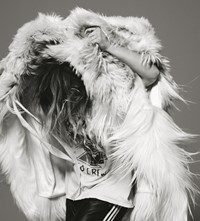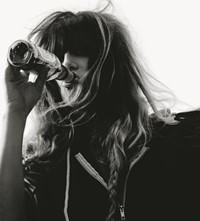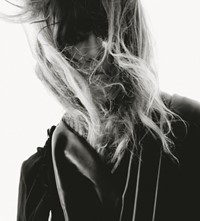Bow down: 90s rock royalty Royal Trux are back with White Stuff, their first studio album in 19 years. Frontwoman Jennifer Herrema, who flexes her art tendencies as much as mic prowess, runs through her favourite maestros
- TextDean Mayo Davies
Shot by David Sims and styled by Katy England, Jennifer Herrema was last in Another Man in 2014, celebrated as the ultimate rock lifer she is. Now she’s back, sharing her favourite artists with very specific parameters. “They’re all 20th century painters,” she says. “Otherwise I could just go on and on… I make art all the time and I’ve got like five different pieces right now [in progress]. I’ll walk away for months or a year at a time and then wander back. It’s just kind of one of those things where I don’t schedule it.”
The show and tell marks a special occasion. Confound the hitherto unthinkable: there’s a new Royal Trux album.
“This is the way it’s supposed to be / push me on a cart through the duty free / hanging out and playing all across the land / Telling everybody we’re the greatest band,” goes the opening to White Stuff, the first vocal we’ve heard from Neil Hagerty and Jennifer Herrema since their union imploded in 2000. Or rather new vocals: in August 2015, the duo reformed for a California show, on less than a day’s rehearsal. A New York show followed, and its coruscating live document, Platinum Tips + Ice Cream.
“It was kind of like playing a video game, you don’t know which way somebody’s going to go, so you’ve got to be on your toes,” Herrema relates over Skype from home in California. (Hagerty lives in Colorado, far enough to be in a different time zone.) “Video games make me nervous – it was the adrenaline I needed because I quickly had to use hard drives in my brain that hadn’t been touched in forever. Afterwards it seemed natural we could easily write another record.”
The band have joined Fat Possum and their back catalogue is finally streaming. White Stuff was recorded last summer over 12 days, with the company of a neutral-party engineer. It was almost called Championship Pizza because their music has “all sorts of insane toppings on it that you don’t understand what it is”.
“I did this photo shoot with a 170-dollar, five-foot diameter pizza,” Herrema reveals. “I bought a lobster and put it on, I had weed all over it. It looked amazing.”
But in the end, the idea needed explanation, and that’s too square. Here’s a band that recoil at the stench of effort, calling out other’s posturing just by their very existence. You either roll with Royal Trux or you don’t. They push the limits: of patience, talent, kismet. The lot. That the record sounds like them after all this time without trying is some kind of magic, the same otherness that characterised the band in the first place. It’s bigger than what life threw them along the way – and there’s been plenty of dirt.
Herrema’s art school background built the group’s visual language: White Stuff was meant to be released in January but the sleeve turned into a time thief, dutifully yielded to without compromise. From the late 80s, she’d make collages for Royal Trux, including one on the back of Forced Exposure magazine where she pulled the wings off monarch butterflies, adding manipulated Polaroids.
“That was the melding of nature and collage,” she pinpoints. “A couple of years ago I did a show in Glasgow with Jim Lambie [2016’s I am A Laser] and the whole nature aspect came back [into my work]. I guess I’m obsessed with nature in some way,” she laughs. “It’s actually the first time I’m thinking about it.”
Cy Twombly
“Cy Twombly is definitely one of my favourite painters in so much that everything he does is so effortless. He wasn’t an attention seeker, this ‘star artist’ but he influenced Basquiat and Schnabel who became celebrity artists or whatever. He’s from Virginia – that’s another thing I like a lot about him – his dad played baseball. Everything culminates in this great, cool, American package yet he’s kind of antithetical to some of the American classic artists like Pollock; he’s just very light with his touch, you know, with the brush. One my favourite works is from later in his life, a whole wall called Say Goodbye, Catullus, to the Shores of Asia Minor. It’s in a gallery in Texas, you have to stand back because it’s so big.”

Francis Bacon
“There’s just something about the way Francis Bacon moves through the decades of his life. The 50s, that’s my favourite stuff. There’s this painting called Dog that has a lot of space and it’s got colour to it, you wouldn’t necessarily guess that it was Bacon. And there’s another from the 50s called Marching Figures, which is totally awesome. I love the fact that he was just like a total fuck-up. [Laughs.] A gambler and a philanderer and outwardly gay; all sorts of over the top with his decadence and such. He and Lucian Freud were really tight – one time we [Royal Trux] were coming back from London on the QE2, going to New York Harbour and Leigh Bowery [who famously sat for Freud] was on the boat. I just couldn’t stop staring at him. That was really outstanding to me.”
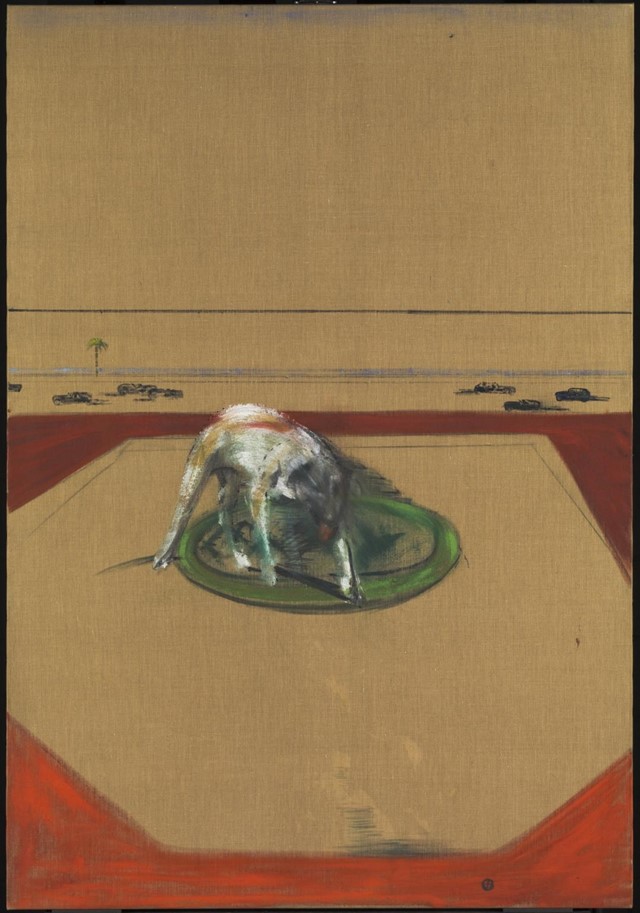
Spencer Sweeney
“Spencer Sweeney I’ve known for 25 years. I think he’s an amazing artist because he’s everything, he doesn’t stick to any one flavour. He’s so prolific and so good at whatever he decides. We hang out all the time but I don’t ask him about his process. It seems to me that he’s very good at executing within the parameters he sets for himself. There’s this one piece, I think it showed at Gavin Brown Enterprise, called Pullin Tubes Trio. He’s shown at a lot of cool places with a bunch of different aspects, different faces. He did a really awesome thing at Rodney Bingenheimer’s – they reopened his club [legendary Sunset Strip haunt Rodney Bingenheimer’s English Disco] for a show some years ago. I thought it was important to put him in because he goes in all different directions but owns it. I really feel kinship to that.”
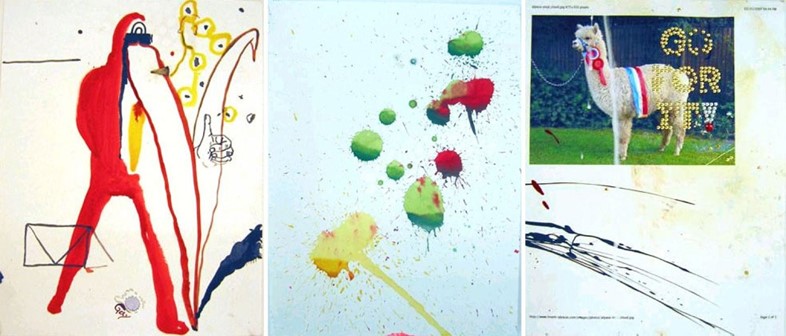
George Bellows
“George Bellows has always been a huge favourite of mine – the boxing stuff, Stag at Sharkey’s from the early 1900s, is amazing. He is so dense and not didactic, those scenes from across the room, they’re just like colours and then you get closer and you see. When I was 13, I took painting classes at the Corcoran School of Art and it was the first time I really started learning about the depth of art, way more than what you’re seeing right in front of you. Being so young I didn’t have a lot of reference points in life yet to assess more mature art, so it was mostly based on first sight and instinct, without knowing anything. That’s how I kind of I figured out some of my favourite things early on. Then I never wanted to know too much about the painters – what if they’re this horrible fucking asshole? I had a willful ignorance to a certain extent, and I kept that. Some of Bellows’ stuff is a combination of abstract and realism, but nobody asked me to write the book… That’s what I’m seeing. And he was kicking against the pricks with the Ashcan School.”
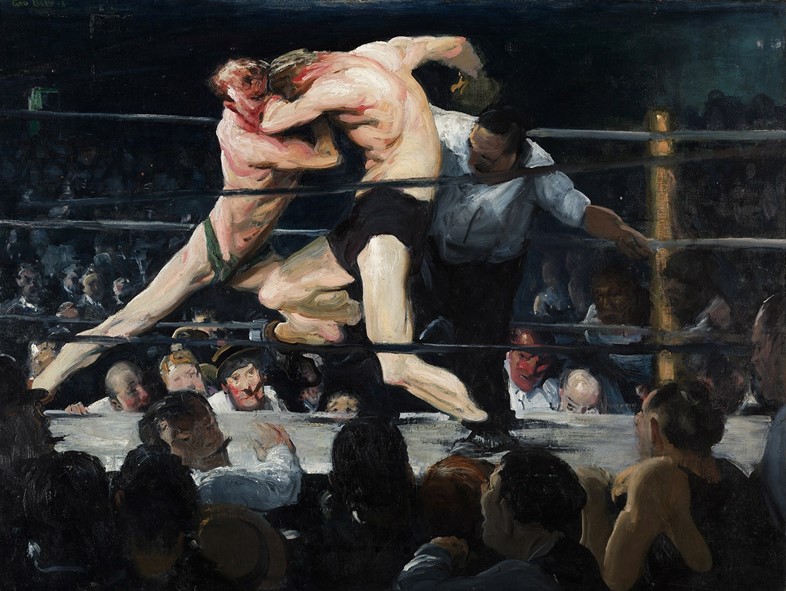
Fritz Scholder
“My friend’s parents were modern art collectors and going over to her house to play when I was eight years old was like a fantasy land. I remember the day they brought home an original Fritz Scholder and it was hanging right by the door when I walked in. It was one of the real classic Indian paintings, I thought it was the coolest thing I’d ever seen. He’s a Native American, most of his subject matter references his heritage to a certain extent, but then he also deconstructs what we think of the American Indian warrior. Hollywood Indian is one of my favourites. It’s got a lot more space than his other work. All the paintings I chose other than George Bellows have a lot of space in them.”
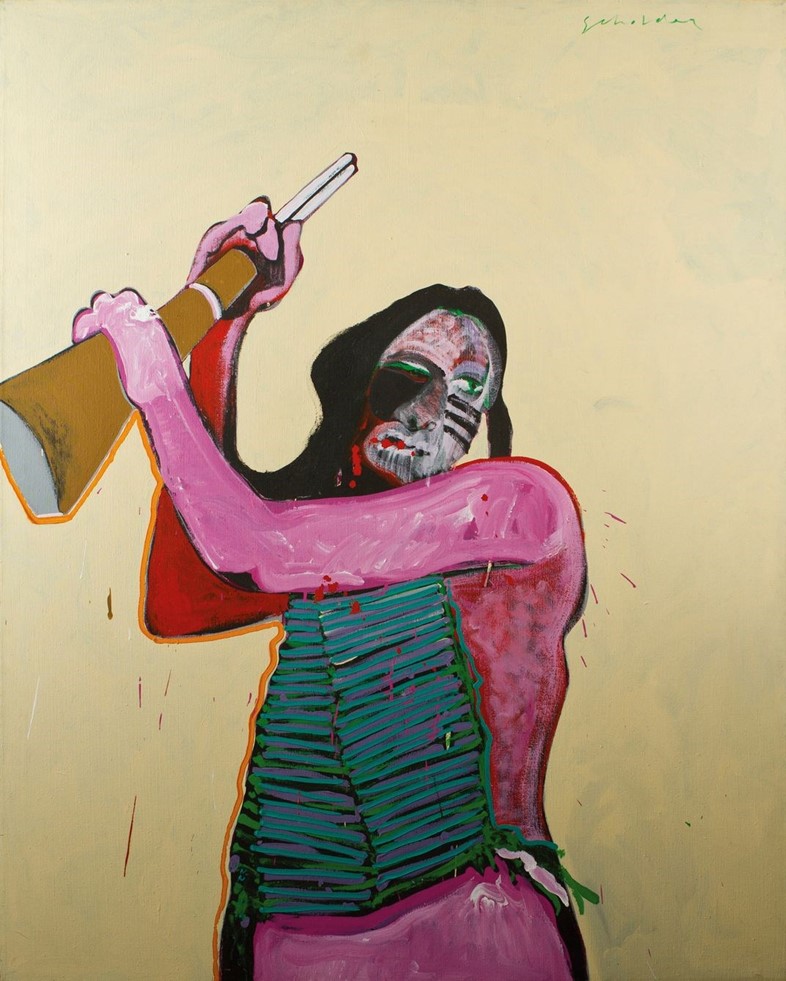
White Stuff by Royal Trux is released March 1 on Fat Possum. The band give good Instagram, follow them.
